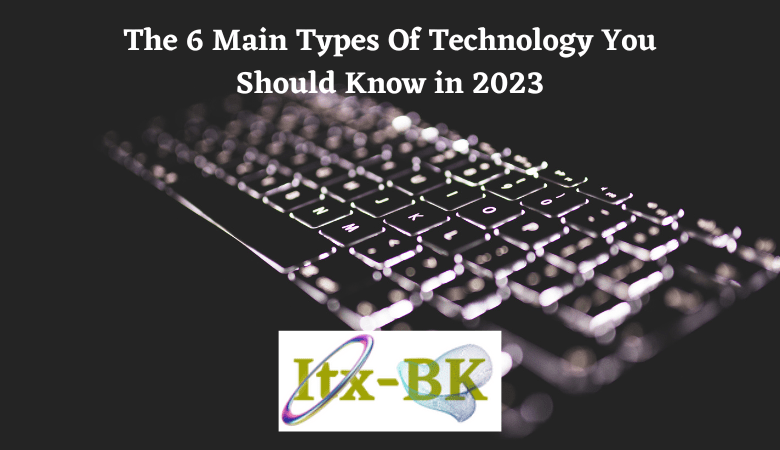
It’s no secret that Technology is constantly evolving. And with every new advancement, there’s always something else on the horizon that promises to be even better. So, what should you be on the lookout for in 2023? Below are six main types of technology you should know about; they just might change the way you live and work.
1. 5G
The fifth generation of wireless technology, 5G is set to drastically improve the speed and coverage of cellular networks. With download speeds of up to 20 Gigabits per second, it’s set to be around 100 times faster than 4G. Not only will this make streaming HD content a breeze, but it’ll also enable new technologies like driverless cars and augmented reality.
2. Electric Vehicles
Electric vehicles are becoming increasingly popular, thanks to their low running costs and environmental friendliness. In 2023, we could see a major breakthrough in battery technology that would make these vehicles even more affordable and practical. Alternatively, hydrogen fuel cells could start to gain ground as a viable alternative to battery power.
3. Artificial Intelligence
Artificial intelligence is already starting to have a big impact on our lives, and this is only going to become more pronounced in the years ahead. In 2023, we can expect AI-powered voice assistants like Siri and Alexa to become even more ubiquitous, while AI-based automation will start to transform many industries, from manufacturing to healthcare.
4. Virtual Reality
Virtual reality has been making waves in the gaming industry for a few
Mainframe Computers
Mainframe computers have been around for a while, and they’re still used by large organizations for critical applications. Mainframes are known for their high reliability, scalability, and performance.
If you’re working in or considering a career in technology, it’s important to have at least a basic understanding of mainframe computers. Here’s what you should know about them:
– Mainframes are designed to handle large amounts of data and transactions. They’re often used by banks, governments, and other organizations that need to process large amounts of data.
– Mainframes are very scalable, meaning they can be easily expanded to accommodate more users and data.
– Mainframes are known for their high reliability. They often run 24/7 without interruption.
– Mainframes offer high performance. They can process large amounts of data quickly and efficiently.
Cloud Computing
Cloud computing is a type of internet-based computing that provides shared computer processing resources and data to computers and other devices on demand. It is a model for enabling ubiquitous, on-demand access to a shared pool of configurable computing resources (e.g., networks, servers, storage, applications, and services) that can be rapidly provisioned and released with minimal management effort or service provider interaction.
Cloud computing relies on sharing of resources to achieve coherence and economies of scale, similar to a utility (like electricity) over an electrical grid. Advocates claim that cloud computing allows companies to avoid up-front infrastructure costs (e.g., buying servers), and focus on projects that differentiate their businesses instead of infrastructure. Proponents also claim that cloud computing allows enterprises to get their applications up and running faster, with improved manageability and less maintenance, and enables IT staff to more rapidly adjust resources to meet fluctuating and unpredictable business demands.
The key characteristics of cloud computing are:
What is the Simple Meaning of Technology 2023?
On-demand self-service. A consumer can unilaterally provision computing capabilities, such as server time and network storage, as needed automatically without requiring human interaction with each service provider.
Broad network access. Capabilities are available over the network and accessed through standard mechanisms that promote use by heterogeneous thin or thick client platforms (e.g., mobile phones, laptops, and PDAs).
Resource pooling. The provider’s computing resources are pooled to serve multiple consumers using a multi-tenant model, with different physical and virtual resources dynamically assigned and reassigned according to consumer demand. There is a sense of location independence in that the customer generally has no control or knowledge over the exact location of the provided resources but may be able to specify location at a higher level of abstraction (e.g., country, state, or data center). Examples of resources include storage, processing, memory, network bandwidth, and virtual machines.
Rapid elasticity. Capabilities can be rapidly and elastically provisioned—in some cases automatically—to quickly scale out and rapidly released to quickly scale in. To the consumer, the capabilities available for provisioning often appear unlimited and can be purchased
Data Warehousing
Data warehousing is a process of storing data from multiple sources in a central location. This allows for easier access and analysis of the data. Data warehouses can be used for reporting, decision making, and knowledge management. There are three main types of data warehouses:
1. Enterprise Data Warehouse (EDW): An EDW is a centralized database that contains all of an organization’s data. It is typically used by large organizations that have multiple departments and business units.
2. Data Mart: A data mart is a smaller version of an EDW. It contains only the data that is relevant to a specific department or business unit. Data marts are typically used by smaller organizations or departments within larger organizations.
3. Virtual Private Data Warehouse (VPDW): A VPDW is a cloud-based data warehouse that offers the benefits of both an EDW and a data mart. It is scalable and can be customized to meet the needs of any organization.
Middleware
Middleware is a type of computer software that connects different types of systems and allows them to share data. It is often used to connect different types of applications, such as those that use different programming languages. Middleware can also be used to connect different parts of the same application, such as the front-end and back-end.
System software
System software is a type of computer program that is designed to run a computer’s hardware and application programs. It provides a platform for other programs to run on, and it manages the computer’s memory and processes. System software is usually pre-installed on a computer when it is purchased.
Programming languages
There are three main types of programming languages: object-oriented, procedural, and functional. Each has its own unique set of features and benefits.
Object-oriented programming languages are the most popular type of language. They allow developers to create objects that can be manipulated and reused. This makes development faster and easier. Some popular object-oriented programming languages include Java, C++, and Python.
Procedural programming languages are designed to be used for specific tasks. They are not as flexible as object-oriented languages but can be more efficient for certain tasks. Some popular procedural programming languages include COBOL and FORTRAN.
Functional programming languages are a relatively new type of language that is growing in popularity. These languages are designed to make code more concise and easy to read. Some popular functional programming languages include Clojure and Haskell.
The Cloud
There are many types of technology out there, but the cloud is one of the most important. The cloud is a collection of servers that are all connected to each other and allow for data to be stored and accessed from anywhere. This type of technology is used by companies like Google and Facebook to keep their user data safe and sound.



